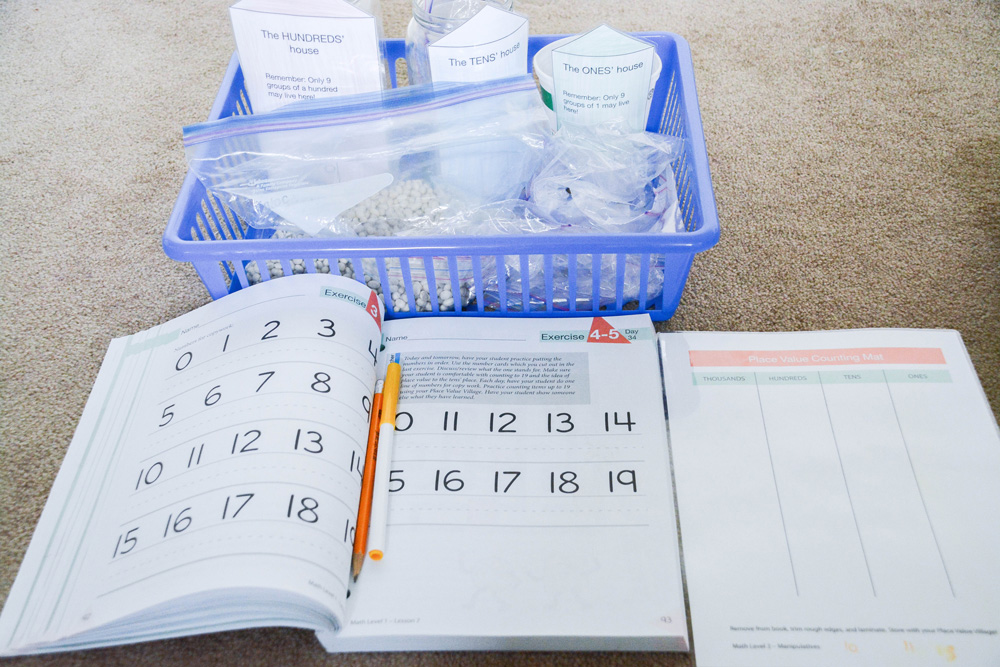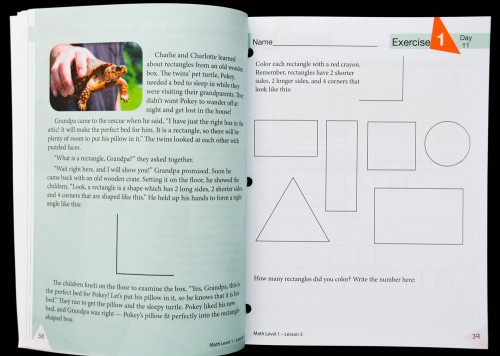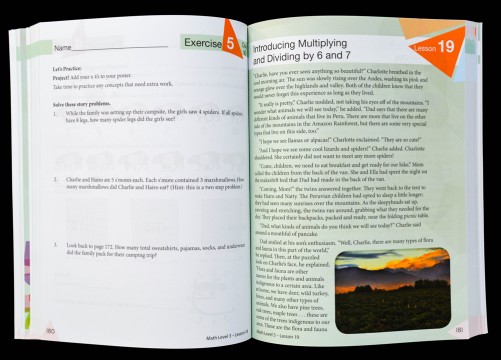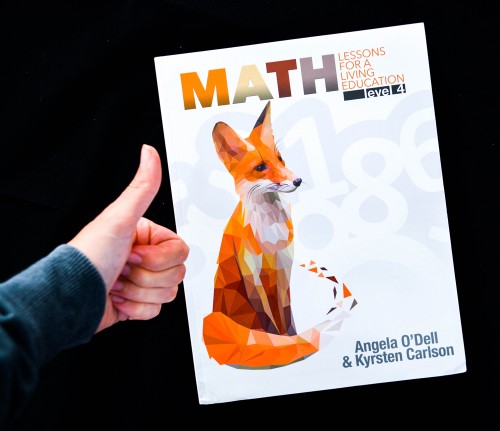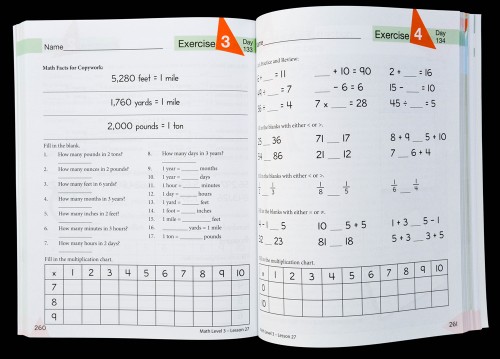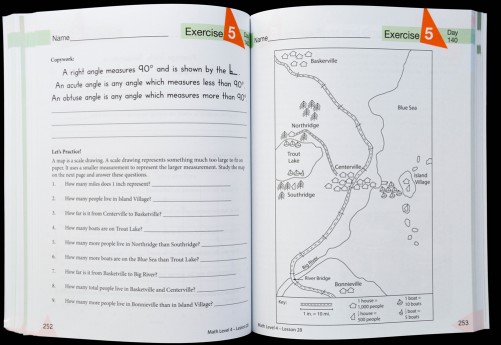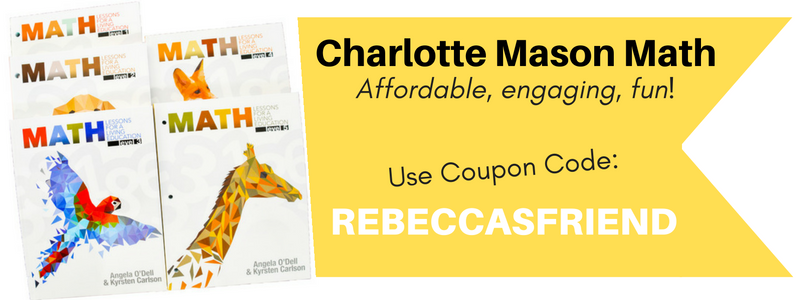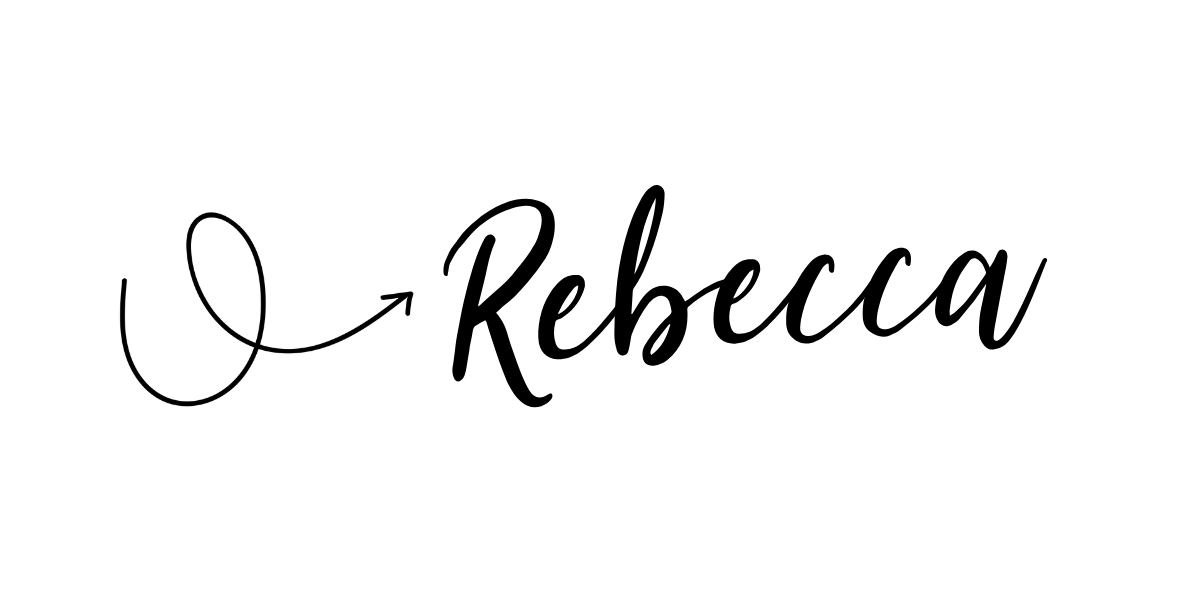When I first heard of Math Lessons for a Living Education, I was intrigued, in a very reserved manner. You see, I have tried a LOT of different math programs. I have learned (the hard way) that math can make or break your homeschool! I was hesitant to try something new because I had worked so hard to get us to the place we were at in math. I spent quite a bit of time researching the books, reading up on them, taking a look at the samples, and basically building up my courage to give it a shot. And here I am, a month after receiving the books. This is a relatively new math that is making the rounds and not one that has gotten a lot of press so I am here today to tell you that this review is going to be DEEP. I have a thousand and one (okay, not really, maybe I need to take a bit more math) pictures to show you and we are going to be looking in on pretty much every aspect that this math has to offer. I hope that if you are like me, in the throes of decision-making, you will find this review comprehensive enough to help you decide if this math is going to work for your family. Plus, stay tuned for an exclusive coupon code!
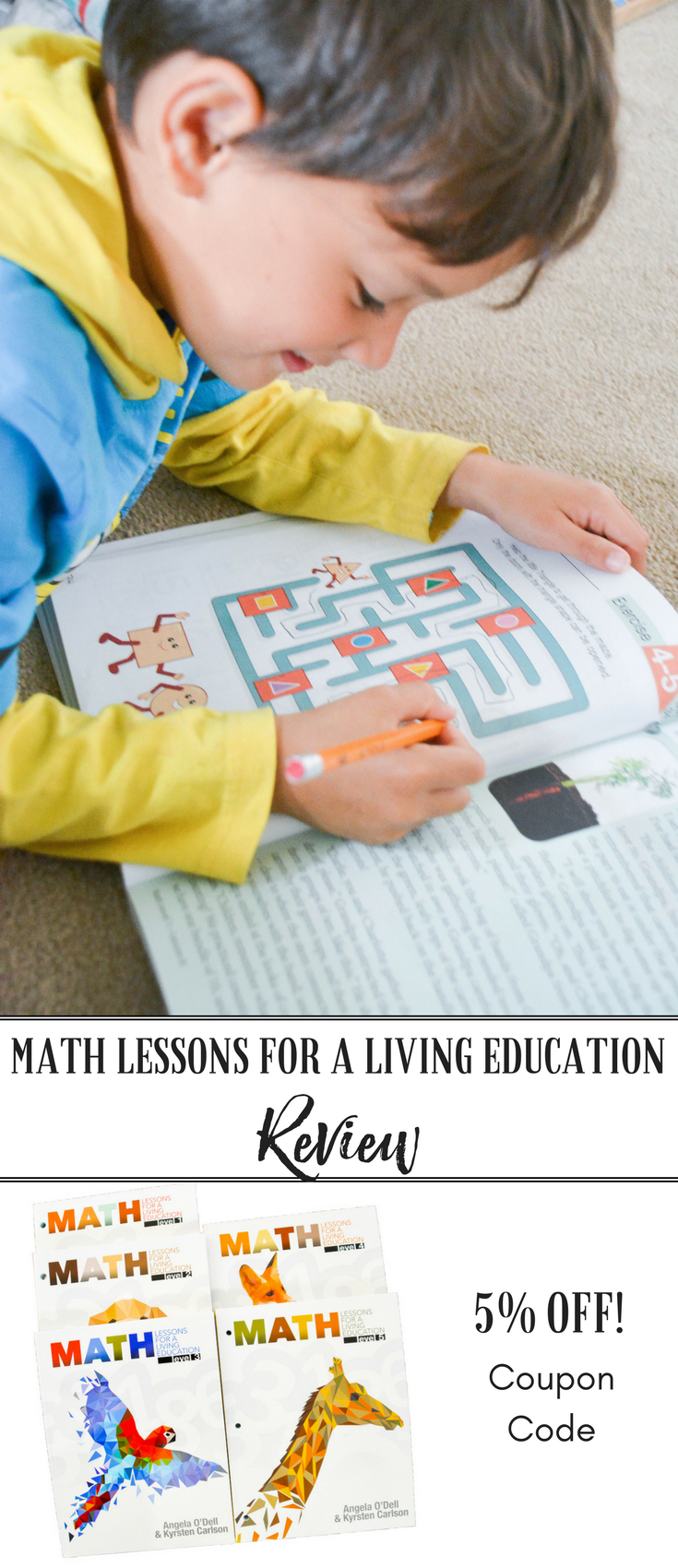
PIN ME!
Math Lessons for a Living Education Review: What is it?
In a nutshell, this is an elementary, Christian math curriculum for homeschoolers. There are 6 books in the series so far and it is designed in levels rather than grades (so that your kids can work through it at their own pace). It is Charlotte Mason inspired, meaning it uses stories, copywork, oral and written narration, hands-on manipulatives, teaching the heart BEFORE the mind, with a mastery and relational approach. It focuses on character building and teaching the whole child, not just the mind through rote repetition and drill assignments. If you are in the market for an elementary math curriculum that is Christian, keep reading!
Math Lessons for a Living Education Review: What Sets it Apart?
The key features of this math program are really unique, I have never seen them in any other curriculum I have reviewed before.
1. It teaches through stories: Stories allow your child to build connections between a concept and real life. They make math applicable and meaningful to your child which means that they are far more likely to remember the lessons in the long term. They build relationship between you and your child through cuddly story reading time.
2. It is not just from a Christian worldview, but instead it weaves God into the stories: Most Christian curriculum that I have come across tends to be written in a way that doesn’t contradict Christianity (which is good) but it doesn’t really take it the step further. Math Lessons for a Living Education (MLFLE) focuses on character building and the wonder of our creator through the stories.
3. There is no teacher’s guide, but rather a math written for both of you: In the very beginning of the math book, there is a schedule with the days, the assignment, a place to assign a date and grade and a checkbox for when you have completed it. Other than this, there is no formal teacher’s guide. This is because the math textbook is written to both you and the child. Throughout the lessons there are teacher’s notes to help give you insight or explain an activity. However, the story and questions are designed to be done together with your child (for the younger grades) so that you are learning right alongside with them! The higher level books are written less to the teacher and more to the child so that they can do it more independently. This is great because it saves money and helps continue to facilitate the Charlotte Mason approach to math, modelling learning with your child rather than teaching to them.
4. It is affordable: This is most affordable math curriculum I have come across. Because there is no teacher’s guide or test book or answer key (there are answers in the back of the books), there is only one book to purchase per child. The books start at just $25.89 (digital version) and are only $27.37 for the print! NOT only that, but you can get an additional discount off any item from Master Books with my exclusive coupon code: REBECCASFRIEND plus you get free shipping (in the US) on all orders over $75! Not only that, but Master Books has a 100% faith grower guarantee. They are so certain that your faith will grow through using their curriculum that they guarantee it!
5. It is hands-on and fun: This is a high priority for me. Math that is dry and boring and repetitious is a recipe for disaster in this house. But MLFLE is far from that! The stories are engaging and interesting, following the lives of two young children in their own homeschool experience. The stories include interesting bits of non-fiction information that teach your child about the world around them, God, nature, etc. NOT just about math. This is the secret weapon of MLFLE because it is this broad story approach that helps children find context in the math lesson. It gives them something they know, they have seen, they understand, to tie that math concept in to. It is also very hands on. Pretty early on in the book you will be making a place value village and it is awesome because it costs you nothing and it is a powerful learning tool! Learn more about the place value village in this video.
6. It is not a huge time investment: When I hear “parent involvement” it makes me a bit hesitant. This is because I have seen some curriculums that could require half a day in that alone. They are heavy project-based and have a huge time investment that is just not practical for me with 5 young children. However, MLFLE is not a drill and review program that has page after page of assignments each day. There are 36 lessons with a story at the beginning (and sometimes middle) of each one, along with 1-2 pages of work for the day. It is a light workload that is based off of a mastery approach but does so through teaching the whole child rather than just drilling the mind. During our review period, the older kids did their math independently (grade 3 and 4-currently doing level 2 and 3) and it took them about 15 minutes. I am finding it an excellent way to go back a bit and re-inforce concepts that may have been missed or lost along the way. My younger son and I do his lessons together. He has been so behind in math that we started with level 1 (he is turning 7). Because it is quite easy for him, we are doing an entire lesson (1 week worth) each day. This takes us more like 30 minutes. The time spent on it will depend on whether there is a project to work on or how long you take to do the story or activity so this will vary from child to child.
7. It is based on levels rather than grades: Because it is a mastery approach, it is not based on grades that could potentially allow children to go to their “grade” and not base the lessons off of what they need to cover or learn. There is a placement test on the website HERE (just select your level and you’ll see a PDF downloadable placement test underneath the description) that will help you identify where to start your child. My kids are all fairly good at math, however because they are working with Math U See, there were a lot of things they hadn’t learned yet and because of that, I had to start at very early levels to make sure there were no gaps moving forward.
8. It teaches the WHY before the HOW: Most math programs teach the how behind math. They are very good at explaining to your child how to do a math problem. The problem with this is that I personally remember doing math for years sometimes, knowing I had to do a set progression of steps and getting my answers correct BUT not ever understanding why I had to do it that way or what it meant. This is how kids get left behind. They can go years without truly understanding place value for example (ahem, my daughter) and then you one day realize it and have to go way back to try to cover what they have missed. In MLFLE you don’t have this problem because they teach the why behind the math concept before they even begin to approach the how. They do this through stories and pictures and hands on activities that make sure that the child fully understands the big picture before they move on. The lessons all have an element of narration in them (written and/or oral) where the student needs to write or explain to you not just what a rectangle is (for example) but WHY.
For example, a problem we worked on in level 1 is that we learned what a rectangle is. Rather than just showing the shape and drawing the shape, we learned that it is made with 2 short sides and two long sides, and 4 right angles. In later lessons when we were reviewing, it would ask them not only to draw a rectangle, but to tell their teacher how they knew that was a rectangle, why was it a rectangle? This same element of review and narration throughout the lessons along with the parent involvement mean that your child really can’t get left behind. Any concepts that they are not truly grasping would be clearly caught if they couldn’t narrate to you why they got that answer in their lesson review section.
Math Lessons for a Living Education Review: Where to Get it!
If these features are getting you excited about math and you are wondering how to get your hands on it or where to learn more, I have a few links for you to check out! If you have more questions, I highly recommend you check out the author’s FAQ page where she addresses some of the more common questions people have asked about the program and goes into a lot more detail HERE. If you are ready to purchase, don’t forget to use the coupon code for an additional discount: REBECCASFRIEND. You can CLICK HERE or on the image below to head over to the shop page.
